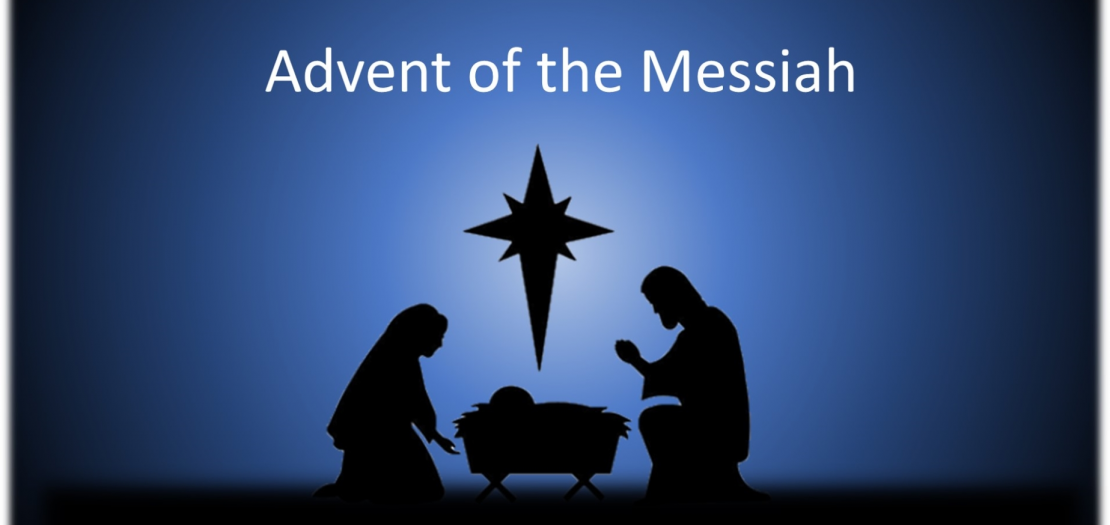Issued by the Catholic Center for Studies and Media - Jordan. Editor-in-chief Fr. Rif'at Bader - موقع أبونا abouna.org
The Messiah and Advent
The Christian observance of Advent is for the preparation for Christmas. It is a time when Christians reflect on the Hebrew Bible, the promises of God, and their fulfillment in Jesus of Nazareth. A common theme in Advent observances is the coming of the Messiah. In many ways, the notion of the Messiah has caught the imagination of generations of Christians. Performances of The Messiah, Georg Friedrich Händel’s famous oratorio (1741), have become traditional in the time before Christmas, artistically strengthening the role the Messiah plays in the Christian understanding of Christ.
The word Messiah is the translation of the Hebrew māšiaḥ, which means “anointed.” It is translated into Greek as christos. As such, the word māšiaḥ appears some 30 times in the Hebrew Bible. It can refer to anyone who has been anointed, e.g. a priest (Lev 4:3), the Davidic king or even Cyrus, the Persian king, (Isa 45:1). What is interesting is that the expression hammāšiaḥ, “the Messiah/Anointed One,” does not appear in the Hebrew text. The title, “Anointed (One),” is both honorific and descriptive, in that anointing was part of the ritual of the king’s coronation and is still used in the coronation ceremonies of some European monarchs. Psalm 2 is seen as part of the coronation ceremony/oracle of the Israelite king. It speaks of the “kings of the earth,” who rise up against Yahweh, the God of Israel, and his Anointed One. Important for later Christian theology, the coronation psalm also sees God as adopting the king at his anointing/coronation: “You are my son; today I have begotten you” (Ps 2:7).
Throughout the time of the Monarchy (ca. 1000 to 587 BC), Messiah was a common title for the reigning king or for a hoped-for better king. It was the role of the reigning king — with the help of God — to protect the people and save them from their enemies. When, as often enough was the case, the reigning king did not live up to the Covenant, the hoped-for saving Messiah was moved toward the future, i.e. to the wicked king’s son or successor. Certain texts, although not speaking directly of the Messiah, were connected with his reign (Gen 49:10; Num 24:17 — a star arising from Jacob, a scepter from Israel; Isa 11:1; etc.)
While the Messiah was endowed with considerable powers and the subject of considerable hope, it was always an historical descendent of David that was expected. However, after the destruction of King David’s dynasty and the Temple of Jerusalem by the Babylonians in 587 BC, the figure of the Messiah began to move more and more into the (idealized/eschatological) future. Unmoored from the Davidic Dynasty, the notion of Messiah and “messianic times” was free to develop in new and often diverse ways.
In the Essene Community of Qumran, from whom we have gotten the “Dead Sea Scrolls,” a highly developed, if idiosyncratic, notion of two Messiahs evolved. In the apocalyptic setting of a “War between the Sons of Darkness and the Sons of Light,” there was a military Messiah and a priestly Messiah, the latter being the more important of the two.
As Israel lost its political independence under the often-brutal oppression of the Hellenist kings and then later the Romans, hopes for the awaited Messiah, now “fortified” with a large dose of apocalyptic beliefs, become more and more political. The Anointed One is now also the Liberator.
By the time of the New Testament, which is written in Greek, the māšiaḥ is now christos, Christ. A complicated word/expression, “Christ” appears some 54 times in the Gospels, but over 200 times in the letters that are universally accepted as Pauline. The word “Christ” can appear alone, as Christ Jesus, Jesus Christ, the Lord Jesus Christ. Only once is there a reference to the Christ in a broader, more generic, sense than Jesus: “And to them [the Jews] belong the patriarchs, and of their race, according to the flesh, is the Christ.” (Rom 9:5)
However, the Christ in Christian belief has moved in a somewhat new and a very different direction. The connection between the Davidic Messiah/Anointed One and the (adopted) son of God (Ps. 2) gets strengthened. For believers, the divine sonship of Jesus was manifested most clearly in his resurrection from the dead. Faced with the scandal of a crucified — and hence, cursed by God (Deut. 21:23) — Messiah, Christians reflected on the Suffering Servant of God in Isaiah and were able to see a suffering, crucified, but ultimately victorious Messiah/Christ.
Thus, the notion of Christ as Messiah in the New Testament has deep roots in the Hebrew Bible. Together with the promises of salvation that Christians and, in different ways, Jews saw in the promises of God, the early believers saw that Messiah in Jesus — Christ. However, the experience of the suffering, death and resurrection of Christ brought radically new understandings to the notion of the Messiah and later how Jesus, the Messiah/Christ, related to God as Son.
Theologians and liturgists sometimes — and at times justifiably — lament that Advent can be a strained, artificial and not overly helpful attempt to pretend for four weeks of the year that Christ has not yet come. During Advent, believers wait for the coming of a messiah (who has already come 2,000 years ago!) However, if we understand the Messiah as the New Testament writers did — as Jesus Christ/Anointed One/Messiah, the Promised One, Incarnate Word and Son of God, Crucified, Raised from the Dead and Exalted at the right hand of the Father — we are not merely immersing ourselves in the past but transforming our present and giving hope for the future.
Advent is not a time for waiting for something to “happen.” It is the time we recommit ourselves to and recall what already happened and how it has radically transformed our lives and our world.


